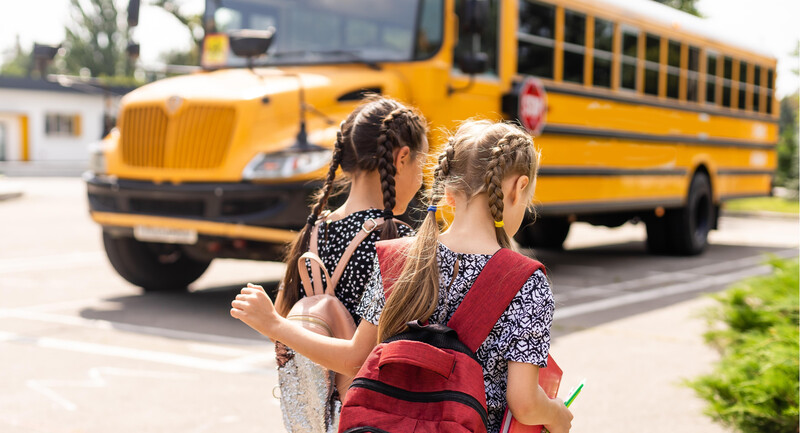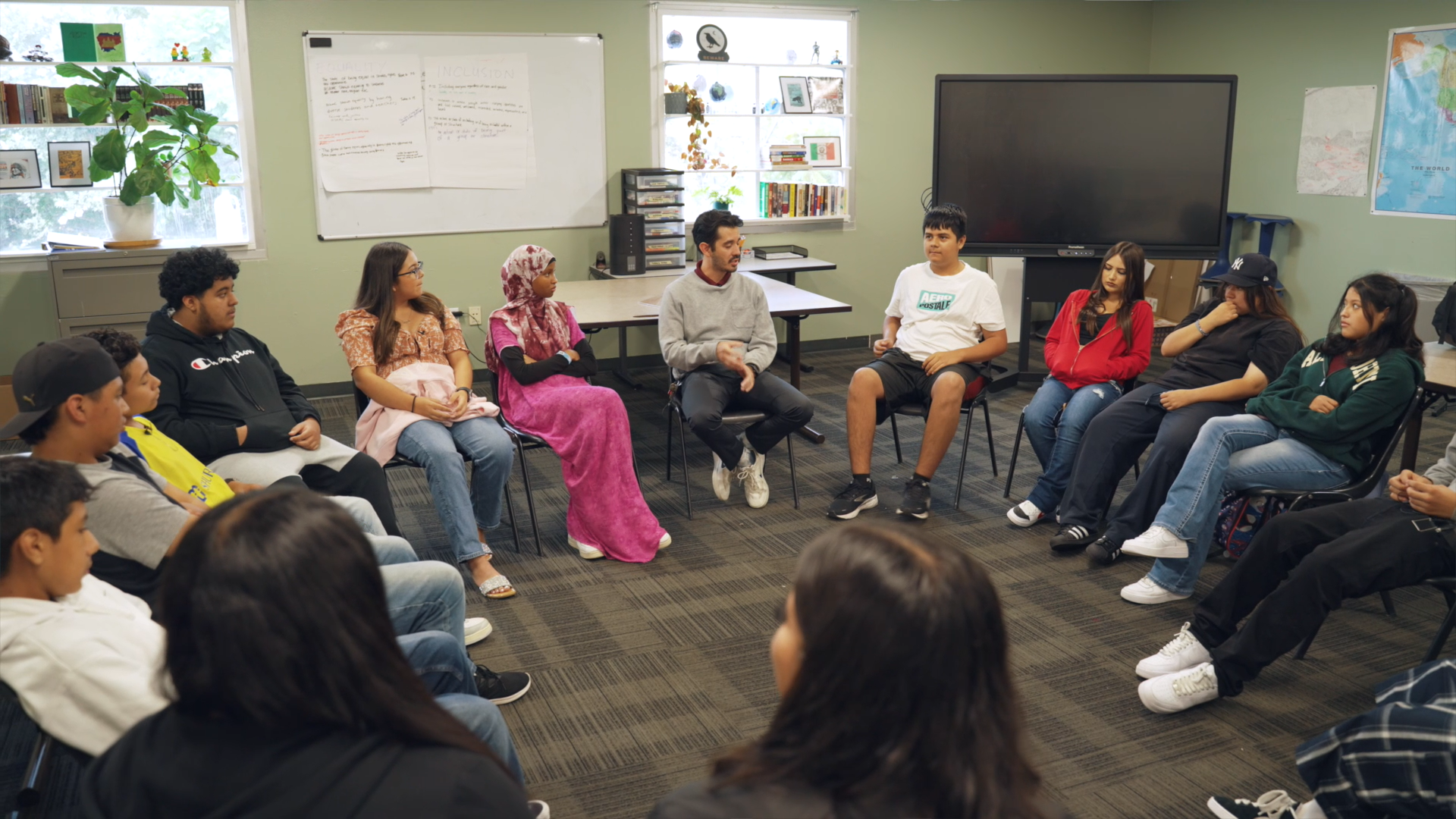Reports on adolescent mental health are troubling. Nearly one in three adolescents report poor mental health, and the problems range from persistent feelings of sadness and hopelessness to thoughts of suicide and suicide attempts. Bullying is a major issue. Teen life is complicated, influenced not only by biological factors and the psychological need to separate from parents and form new relationships and identities, but also by the complexities introduced by the internet and other social factors. Schools may not be helping. When asked how they felt in school, three quarters of the words teens chose were negative, the top being “tired,” “bored,” and “stressed.” Interventions aimed at mitigating teen’s mental health problems have come up short. However, our research suggests that a relatively minor investment in literacy teaching could have major payoffs for teens’ well-being.
As university professors and researchers, we spent over four years studying the impact of four 8th grade English Language Arts (ELA) teachers' decision to prioritize student engagement. With help from the International Literacy Association and university-based research funds, we supported the teachers in providing students with a vast collection of high-quality young adult books. Instead of assigning specific books, the teachers encouraged students to choose their own reading materials, dedicating ample time for reading and informal discussions about their chosen books with peers. In these classrooms, what is typically known as "silent reading time" was transformed into active reading and discussion sessions lasting at least thirty minutes each day. These discussions, initiated by students, ranged from seeking help with confusing parts of a book to sharing exciting moments or discussing character dilemmas. Teachers occasionally joined these discussions, not to steer them or assess comprehension, but to weigh in on conversations about books they liked or even to enlist students’ help with books that puzzled them.
While the teachers didn't assign books for the entire class to read, they frequently read aloud specific passages of a book to students, embedding instruction within ongoing discussions. They shifted away from assigning specific readings or merely holding students accountable with questions, quizzes, and tasks. Instead, when teachers started discussions, they aimed to spark meaningful interactions using prompts like "Catch me up" or "What are you thinking?" These conversations—whether held with the whole class, individually, or in small groups initiated by students—offered ample opportunities for identifying and resolving problems, facilitating learning, and fostering connections among students and supportive peers.
In-class discussions provided teachers with valuable insights into students' thoughts and understanding, although these conversations were not graded. Teachers’ methods of grading students’ understanding of content and skills from their state ELA curriculum varied. Despite the variety in assessment approaches, teachers found it relatively easy to document students' learning due to their extensive reading engagement and exposure to various books. For instance, one teacher allocated Friday classes for students to formally present book talks about their favorite recent reads. In preparation for these talks, the teacher distributed blank charts focusing on narrative elements for students to fill out about the book they intended to discuss. The students then used these charts to support their book talks, if desired, and submitted them for a grade.
It might be more useful to view ELA classrooms as sites for conversations—with selves and others—that expand students’ social, moral, and intellectual development.
ELA teachers tend to focus only on these measurable content and skills: how to read and interpret books. The 8th grade teachers in our study attended to these goals, but they began to focus on other kinds of growth. Our research in their classrooms suggests that it might be more useful to view ELA classrooms as sites for conversations—with selves and others—that expand students’ social, moral, and intellectual development.
Choice matters. Books that facilitated transformations in the students we followed were ones that were personally meaningful. Students must have access to a wide variety of books, including many currently banned, to allow them to find stories that they can connect with. The moral and relational complications in these books prompt students to reflect on their own lives and to initiate conversations not only about the characters, but also about the students' own experiences.
When Teens Choose to Read
Teachers’ efforts facilitated improved reading, but also remarkable changes in students’ broader lives. Here are some of the impacts of these practices on student well-being.
Students read more and read better.
Because of students’ sense of autonomy and the personal relevance of the books, students read significantly more than before—as they attested in beginning and end-of-year interviews—and with much deeper engagement. It’s no surprise that their reading improved over time, along with state test scores and passing rates. Also, score differences between student subgroups diminished. It didn’t make a difference that almost all their reading was narrative fiction, while the test passages were expository.
Engagement with characters drew students’ attention to how books were written. They noticed and appreciated how authors’ decisions around word choice, point-of-view, perspective, figurative language, and text structure made books better. Teaching about literary concepts was simplified because students brought them up in class discussions with examples from their own reading. For example, students were deeply interested in a book one teacher was reading aloud, but expressed confusion because of flashbacks in the narrative. The blend of curiosity and confusion offered the teacher a perfect opportunity to explain the concept and function of flashbacks.
Students expanded and improved relationships through book talk.
The books students chose were rife with moral and relational dilemmas, opening conversations about race, character, drugs, relationships, sexuality, abuse, and societal inequities. Emotionally invested in characters’ predicaments, the students wanted to talk—to clear up confusion, to get another’s perspective, or to “rage” about it, as one student phrased it. They talked to peers, teachers, family—whoever would listen. That sometimes meant students would actively recruit new readers or reach out to peers from other social groups, resulting in a breakdown of cliques, an increase in friendship and support networks, and a build-up of trust. One student observed, “Everybody’s having conversations with each other about it; it seems like you’re friends with everybody.”
Beyond the classroom, students used books to open conversations with family members. Some parents read the books along with their teens, having conversations about drugs, sex, and other previously unreachable topics by discussing characters’ decisions.
Students became more empathic.
Adults who read fiction become more able and inclined to imagine others’ thoughts and feelings. This was also true among teens in our research, and conversations augmented the effects.
As one student pointed out, “When you talk about books…focusing on feelings and stuff like that...everybody just seems more compassionate about things.”
This ability to imagine others’ thoughts and feelings and take up others’ perspectives is at the heart of social-emotional learning.
This ability to imagine others’ thoughts and feelings and take up others’ perspectives is at the heart of social-emotional learning, which includes the ability and propensity to recognize thoughts and emotions in others, to manage them in difficult situations, and to have positive and productive relationships. Teens with more developed skills in this area are more attentive to others, more altruistic, and less prone to depression and anxiety. They have better relationships, more friends, stronger support networks, can handle social conflicts, and are less likely to misbehave at school and at home or to get expelled. Students we studied also reported being less judgmental but more prepared to take a moral stand. One student said that after reading about bullied characters, she “kind of put a stop” to bullying she saw on Facebook.
Students’ self-regulation improved.
Thinking about the consequences of characters’ poor decisions made students take more seriously the potential consequences of their own decisions. After reading about a character wrecked by drug use, one student admitted, “I don’t make the best choices in the world...I better think again before I do something because it can really mess up my life.”
Also, they recognized that reading an engaging book kept them happily occupied and less likely to get in trouble. Reading can also temper negative emotions, or, as one student explained, “It calms you down.”
Students started healing.
Teens deal with plenty of trauma: deaths of friends and family, divorce, abuse, poverty, eviction, protracted family illness, and heartbreak of one sort or another. Many students reported that reading about others’ experiences helped them deal with grief and depression. Parents backed up their claims. For some students, the books were more than cathartic. They began to see their complex histories as tools for agency. Realizing the social and economic conditions of some characters’ lives were worse than that of her own difficult upbringing, one student imagined that she could become a social worker.
A Richer Reading Experience
We noticed in our study that teachers changed, too. Their goals and efforts expanded in response to the broader range of benefits students gained from reading. They planned less, and listened and responded more, all without sacrificing the “standards.” The learning community was more satisfying, and relationships with students were more enjoyable.
When we, rather than students, choose the books they can and cannot read, we reduce not only the likelihood they will become engaged readers, but also the possibilities for improving their mental health and well-being.








